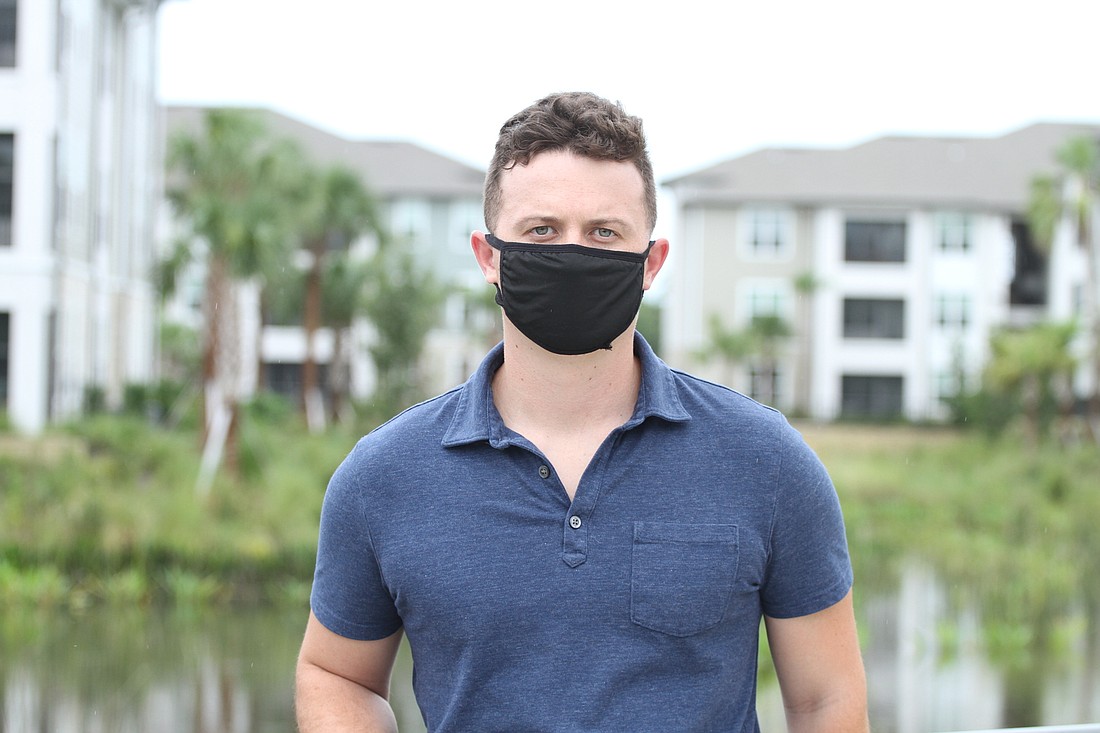- May 17, 2025
-
-
Loading

Loading

When Harry Sayer, a self-described 26-year-old man of relatively good health, had trouble catching his breath walking up the 39 stairs to his third-floor apartment, he knew he had a problem.
Sayer typically walks up and down the stairs several times a day without any issue. However, on one Friday in June, he barely made it to the landing.
“At that point, I knew I was in trouble,” Sayer said. “I was leaning against my door like, ‘What the heck just happened?’”
Sayer, an Observer journalist, had been following the news and Centers for Disease Control and Prevention guidelines closely.
He always wore a mask outdoors. He stayed 6 feet away from others, and he avoided bars and restaurants.
However, the weekend of June 12, he went to visit a friend in Orlando.
“I thought it was worth the risk, and I was wrong,” Sayer said. “It was definitely not worth it.”
It was about five days later that he couldn’t make it up the stairs, and six days later he could barely get out of bed.
“I woke up and felt really crummy,” Sayer said. “It steadily got worse throughout the day, and by about 6 p.m., I had chills everywhere and almost felt delirious.”
The next day, he awoke with a high fever and intense pain throughout his body. He felt a lump in his chest that made it hard to breathe correctly.
He went to get tested three days after he couldn’t walk up the stairs. By that point, he lost his senses of smell and taste and knew before he received a positive diagnosis that he had COVID-19.
“It’s really weird to eat a full plate of hot wings and just get nothing from it,” he said. “It’s very bizarre. I was sniffing my orange juice carton every day to see if my senses were coming back.”
Although his breathing got better, the fatigue worsened. It became hard for him to make simple meals or focus on working from home.
Although he said the physical ailments weren’t fun, the mental toll the virus took was worse.
“We understand it in the broadest terms, but we don’t know the after effects and how long it’s going to take and how long it will affect each individual person,” Sayer said. “It’s kind of a wild card, and the uncertainty of it really got to me.”
During his two weeks of quarantine, Sayer watched a lot of movies — about three a day. His friends dropped off groceries to his doorstep and talked from a safe distance. Still, the psychological effects took their toll.
“The psychological effects of being stuck in a box for two weeks with noting to do but watch movies and think about how bad your body feels is not fun,” he said. “But eventually, my body started improving.”
After receiving two negative tests, Sayer felt confident leaving his apartment and resuming his normal life, though he still doesn’t feel 100% better.
Now, he’s trying to walk — while remaining socially distanced, of course — to rebuild some of his strength.
After having gone through it, Sayer advises people to not take any risks. If a person does test positive for COVID-19, the best advice he can give, he said, is to remember that it will get better.
“For someone going through it, I would say, ‘Be easy on yourself, and trust yourself to get better,’” Sayer said. “‘Don’t try to stretch yourself out and make the situation worse.’”